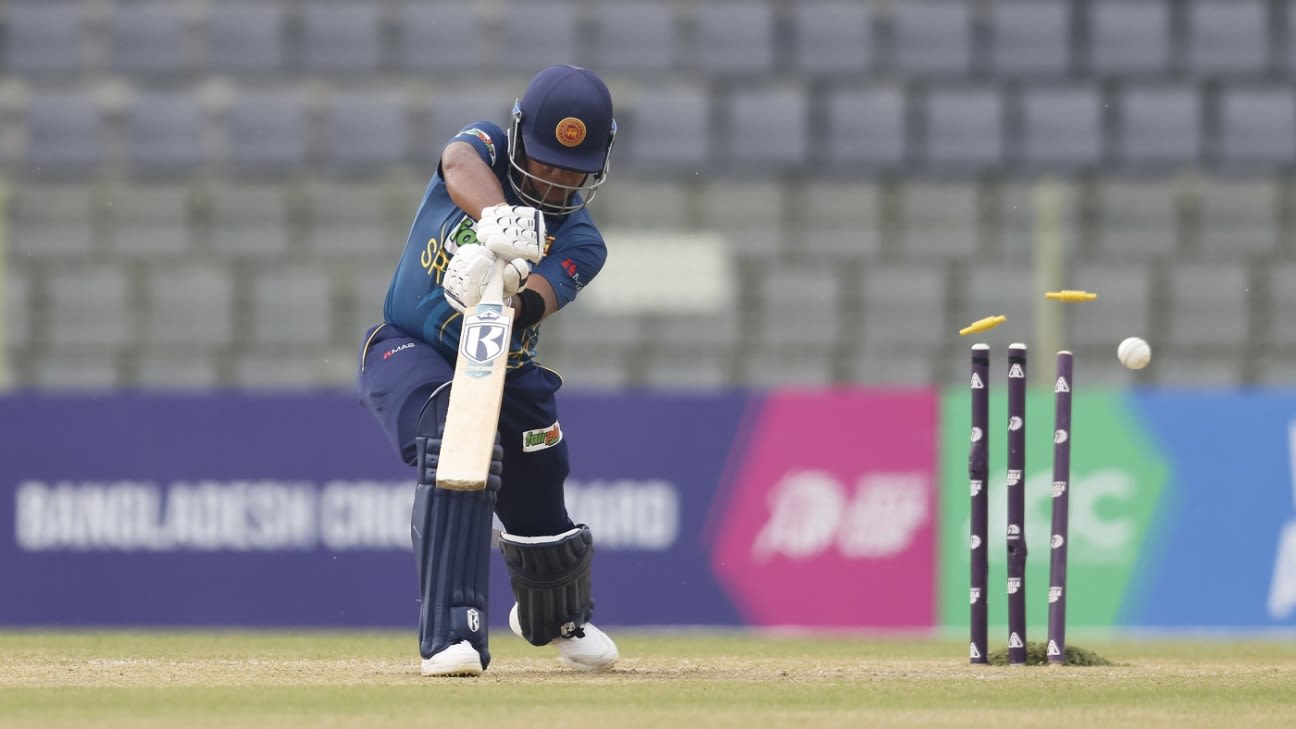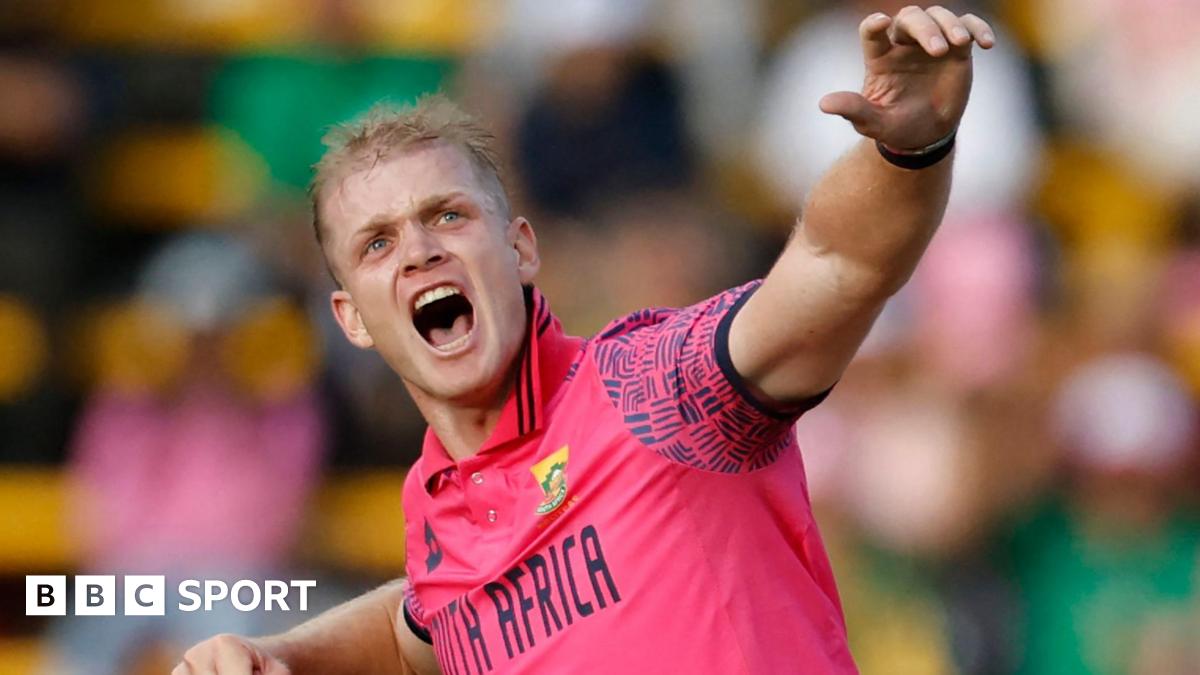Women’s cricket is the ideal playground for swing

Cricket balls swing. Swing makes the game richer. It might be the least challenging of the movements bowlers access, but visually it is arguably the most spectacular. It occurs over a longer trajectory than seam and turn off the surface, and it is quicker and higher in degree than the subtle drift and dip of the spinner. Extra swing is among the first things that stand out in women’s cricket.
It is natural that the ball should swing more in women’s cricket. Rabindra Mehta, a NASA scientist who once shared the new ball with Imran Khan at school, has spent a significant amount of his time studying swing. A “side force” makes the ball swing, Mehta has written in his papers, which is generated because of a pressure difference between the two sides of the ball split by a seam that is not wobbling or wobbling very little.
Mehta’s experiments have shown the maximum side force is generated when the ball is bowled at 112.65kph, the seam is titled at 20 degrees, and the backspin on the ball is 11 revolutions per second. Some later papers suggest 108kph generates the maximum swing. About half the deliveries bowled in women’s T20 cricket in 2023 were between 100 and 110kmph, and 21% in the 110-120 band.
As a combination of more time in the air and the ideal side force, both because of the slower pace compared to the men’s game, women’s cricket is the ideal playground for swing. Or at least conventional swing. Old-ball swing is slightly complicated. For the sake of convenience, we call all old-ball swing reverse swing these days. The literal reverse swing needs a tilted seam and high pace that women, at least so far, don’t ever hit. Contrast swing, though, is achievable at their pace with an upright seam provided the ball is ready. There is hardly any time for this to happen in limited-overs cricket, and women play so few Tests that there is hardly any contrast swing of note.
Now we need to make ourselves a little less comfortable about our trust in what we think we see. The casual, almost unanimous assertion is that women swing the ball predominantly into the right-hand batter. Pandey, whose inswinger to Healy got dubbed the ball of the century by many including Wasim Jaffer, is the first one to dispel the notion despite being an inswing bowler herself.
“I don’t really agree that there are only inswing bowlers,” Pandey tells ESPNcricinfo. “There are a lot of outswing bowlers as well. Shabnim Ismail, for example, is a seam bowler, but she does get the ball to swing out. Marizanne Kapp is someone else who swings the ball both in and out. Katherine Brunt used to get nice shape out. Towards the later part of her career only, she learnt how to get the ball to come in, but that was very subtle, not banana swing. So probably what you’re trying to say is banana inswing.
“As a kid growing up, my bowling action was such that my hand was very close to my knee. I didn’t use to get that big inswing when I started. But then I realised that in domestic circuit, the ball coming in was the one that was fetching me wickets. So subconsciously my action became more and more inswing-friendly because I was getting wickets. And at that age you were not really thinking about anything else, you’re just thinking about the results.”
When Pandey made it to international cricket, she realised within a year that just big booming inswing was not going to cut it. People began to take the off-stump guard and cover the stumps by getting outside of the line. Bowled and lbw were almost out of the picture. She started to work on the ball that straightens, and now has that variation, which basically uses angles on the crease and slight technical adjustments.
The point is, there are enough outswing bowlers in women’s cricket too. “Look at the current scenario,” Pandey says. “In India there is Pooja Vastrakar, who bowls outswing and wobble-seam to bring the ball in. Renuka Thakur is mostly inswing. In England, Lauren Bell inswinger, Natalie Sciver mostly seam bowler. Kate Cross again, wobble seam to get the ball to come in, otherwise she gets the ball to shape out.
“In Australia, Megan Schutt inswinger. Darcie Brown is a tearaway bowler, genuine outswinger, doesn’t swing the ball in at all. Tayla Vlaemink is fast, 125ks, doesn’t need swing. Kim Garth, again, genuine outswinger, but has worked on the wobble-seam delivery. South Africa, Shabnim is now retired, but as I said she bowled beautiful outswing. Marizanne gets the ball to move both ways in the air. Ayabonga Khaka is an inswinger.”
Preliminary data – just counting the number of bowlers of each kind – seems to suggest there is a much more even split of inswing and outswing in women’s cricket than widely assumed. We dig deeper. The following bell curve, done by Ganjoo, suggests no partiality towards inswing. If anything, the peak of the graph tells us the likeliest ball we are to see in women’s cricket is a small outswinger. Minuses are outswing for the right-hand batter, pluses are inswing. It probably is indeed true that we have let highlight reels cloud our opinion here.
Beyond the visual appeal, though, the extra swing and everything that comes with it has a significant impact on almost the whole vocabulary of women’s cricket. Almost everything in fast bowling is described in relation to good length. For men, we all tend to agree that a good length is a pitching point from where the ball can hit the top of the stumps.
This hack doesn’t quite work for women. The height of the stumps is 0.71m. On average, in 2023, men hit that height when the ball bounced 6-7m from the stumps. It is consistent with what we have largely agreed upon in men’s cricket: 6-7m from the stumps is good length, 7-8m is the hard length, and 5-6m the aggressive good length. For women to hit the top of the stumps, they have to pitch in the 7-8m band, closer to 8 than 7. Now, at their pace, against batters of shorter stature, if they bowl that length, it gives batters enough time to play off the back foot.
Women, thus, have to operate more on the literal definition of good length: one where a batter is not close to the pitch of the ball if they play forward, and hurried if they go back. So everything gets pushed a metre fuller in women’s cricket.
Women’s cricket uses a smaller ball and shorter boundaries, but the pitch and the stumps remain the same. It becomes a completely different sport. Women fast bowlers have to bowl fuller. And because they swing it more, fast bowlers train to bowl a 4-5.5m length, and then adjust to the given conditions. Now this sounds a little too ambitious, but they believe the movement brings in jeopardy. A drive even slightly on the up comes with risk. Nor do women batters charge at the quicks as often as men do.
Some coaches believe that batters’ hitting technique has far more room for improvement in women’s cricket than the bowling. It is evident in how bowling slow rollers is not good enough in women’s cricket anymore as batters have learnt to generate their own power into shots.
In T20 cricket in 2023, women fast bowlers bowled 12.48% of their deliveries in the 4-5m zone. Men went into the aggressive 5-6m good length only 9.61% of the time. Women extracted better results from 5-8m lengths before the shorter balls started going for more runs. These are not great trends for their optimism. The batters will still keep unlocking their hitting prowess; how bowlers catch up is something to keep an eye on.
Sidharth Monga is a senior writer at ESPNcricinfo
Related
‘Listen from one ear, ignore from the other’: Former India…
India's Rohit Sharma and Mohammed Shami (AP Photo) NEW DELHI: Former wicketkeeper-batter Syed Kirmani has expressed his opinion that experienced fast bowler Mo
India faces New Zealand in budding rivalry at Champions Trophy…
State AlabamaAlaskaArizonaArkansasCa
ICC and Unilever announce landmark partnership on International Women’s Day…
The two-year partnership, kicking off at this year’s Women’s Cricket World Cup in India and running until the end of 2027, marks the world cricket governing
IPL 2025: Mumbai Indians sign Corbin Bosch as replacement for…
Mumbai Indians have signed South Africa all-rounder Corbin Bosch as a replacement for his injured countryman Lizaad Williams for this year's Indian Premier Leag











